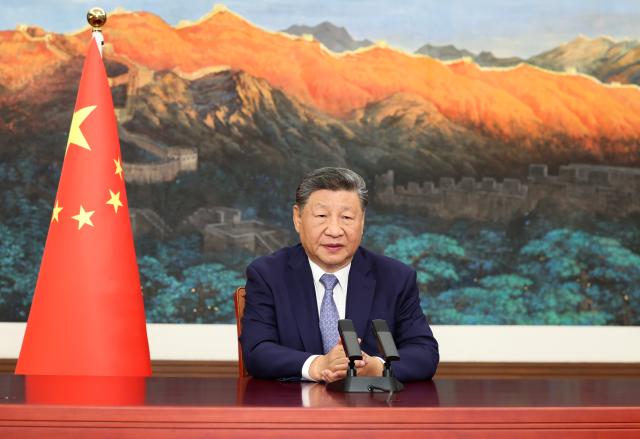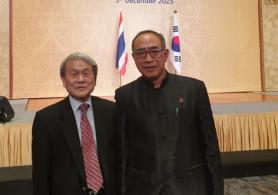
[This opinion article was contributed by Lu Rui, Xinhua News Agency Seoul Bureau Chief]
SEOUL, October 29 (AJP) - At the Gyeongju Hwabaek International Convention Center in South Korea, representatives from the 21 member economies of the Asia-Pacific Economic Cooperation (APEC) will soon gather to chart a new blueprint for shared growth.
As a responsible major country and an active participant, contributor and leader in Asia-Pacific cooperation, China calls for openness and inclusiveness, mutual benefit and win-win outcomes, and joint efforts to build an Asia-Pacific community with a shared future.
Since its founding in 1989, APEC has become one of the highest-level, most wide-ranging and most influential economic cooperation mechanisms in the region. Guided by the principle of open regionalism, APEC respects the diversity of its members in political systems, development stages and social cultures, and promotes regional development through practical cooperation.
This approach has turned the Asia-Pacific into a key engine of global growth, an anchor of stability and a high ground for cooperation. As one of the region's major economies, China continues to serve as a driving force in advancing regional prosperity.
As Chinese President Xi Jinping noted in his written remarks on the 2024 APEC CEO Summit, "the success of the Asia-Pacific is due to our firm commitment to peace and stability in the region, to our continuous practices of true multilateralism and open regionalism, and to our deep faith in the trend toward economic globalization as well as mutual benefit and mutual success."
Today, as unilateralism and protectionism resurface and global industrial and supply chains undergo profound restructuring, the Asia-Pacific stands at a critical crossroads on its journey toward the next "golden 30 years."
Will economies turn inward and build "small yards with high fences," or will they stay open and cooperative?
China is responding through concrete action, remaining committed to openness over isolation, cooperation over confrontation, and connectivity over division. By strengthening industrial and supply chain resilience, deepening cooperation in digital economy and green development, and advancing sustainable development, China contributes both insights and strength to a more prosperous Asia-Pacific.
Openness and inclusiveness form the cornerstone of Asia-Pacific cooperation. In an era of irreversible globalization, building an open world economy, safeguarding free trade, and advancing regional integration have become a shared aspiration.
China continues to expand high-standard opening-up, fully implement the Regional Comprehensive Economic Partnership and strive to join the Comprehensive and Progressive Agreement for Trans-Pacific Partnership and the Digital Economy Partnership Agreement. Aligning with international high-standard economic and trade rules, China injects new vitality into regional openness and stability amid global uncertainties.
Innovation, meanwhile, remains the enduring engine of Asia-Pacific growth. As digitalization, green innovation and intelligent transformation accelerate, economies across the region are turning to new technologies and industries for momentum.
The Putrajaya Vision 2040 highlights digital and innovation-driven development as key to achieving inclusive and sustainable growth in the post-Bogor era. From leading the world in new energy vehicle production to breakthroughs like the DeepSeek large language model, China is transforming "technological dividends" into "growth dividends," boosting cooperation and fostering new growth drivers for regional and global recovery.
Multilateral cooperation is vital to making openness and innovation take root. APEC's strength lies in its principles of consultation, joint contribution and shared benefits in expanding convergence of interests across different development stages and systems. To advance win-win cooperation, the multilateral trading system centered on the World Trade Organization must be upheld, and we must say no to any attempt to politicize, weaponize, or impose security implications on economic and trade issues, or to use "de-risking" as a pretext for exclusion.
At the recent "Shanghai Cooperation Organization Plus" Meeting in Tianjin, President Xi proposed the Global Governance Initiative, calling on all nations to uphold and practice true multilateralism. China has consistently called for discussing regional affairs together, building platforms and mechanisms together, and benefiting from cooperation together.
Next year, China will host the APEC meetings -- a new starting point for deepening Asia-Pacific cooperation and a major opportunity for China to share the benefits of its high-quality development with regional partners.
As South Korea and China are to consecutively host APEC gatherings, members are encouraged to revisit their original aspirations and missions, and to continue to open up, connect more, and cooperate more closely. Together, they can foster market complementarity, connectivity and rule alignment, and continue to promote Asia-Pacific cooperation and shared prosperity.
Copyright ⓒ Aju Press All rights reserved.



